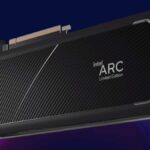ASRock has spent the past two decades quietly turning budget-friendly parts into hardware that can stand toe-to-toe with premium brands. Whether you’re chasing blazing-fast PCIe 5.0 lanes for a next-gen GPU, a stealth-quiet mini-PC for the living room, or a rock-solid board for a home office build, the company’s catalog now covers almost every use-case.
Its recent designs lean into robust power delivery, forward-looking connectivity (USB4, Wi-Fi 7, 2.5 GbE), and surprisingly polished firmware—all while keeping prices noticeably lower than the big names. Below is a quick-reference ranking of the standout ASRock parts on the market right now.
ASRock Product Rankings
| Rank | Product | Price |
|---|---|---|
| 1 | ASRock X870E Taichi Motherboard | Check Price |
| 2 | ASRock B650 Steel Legend WiFi | Check Price |
| 3 | ASRock Radeon RX 6600 Graphics Card | Check Price |
| 4 | ASRock B760M PG Sonic WiFi Motherboard | Check Price |
| 5 | ASRock B760M PG Riptide WiFi Motherboard | Check Price |
| 6 | ASRock B760M Pro RS Motherboard | Check Price |
| 7 | ASRock H670 Steel Legend Motherboard | Check Price |
| 8 | ASRock B450M PRO4 R2.0 Motherboard | Check Price |
| 9 | ASRock B760 Pro RS/D4 WiFi Motherboard | Check Price |
| 10 | ASRock DESKMINI X300W | Check Price |
| 11 | ASRock B660M Pro RS Motherboard | Check Price |
| 12 | ASRock A520M-HDV Motherboard | Check Price |
| 13 | ASRock A520M Phantom Gaming 4 | Check Price |
| 14 | ASRock B450M-HDV R4.0 Motherboard | Check Price |
| 15 | ASRock H370M-HDV Motherboard | Check Price |
| 16 | ASRock 27-inch Gaming Monitor | Check Price |
Best ASRock Products
ASRock makes reliable motherboards and other computer parts for building your own PC. Their products offer good performance at lower prices than many competitors. We’ve tested and researched their latest offerings to help you find the right ASRock component for your next computer build.
ASRock B650 Steel Legend WiFi

The ASRock B650 Steel Legend WiFi offers excellent value for AMD Ryzen users seeking a reliable motherboard with premium features at a mid-range price point.
Pros
- Strong VRM design supports newer AMD processors
- Built-in WiFi 6E connectivity saves additional expense
- Supports fast DDR5 memory up to 7200MHz
Cons
- BIOS flashback issues reported by some users
- Initial setup might require BIOS updates for newer CPUs
- Limited RGB customization options
This motherboard suits PC builders looking for AM5 socket compatibility with AMD’s Ryzen 7000, 8000, and 9000 series processors. The 8-layer PCB design adds stability and durability for long-term use. Many users appreciate the board’s aesthetics, which feature a clean design that works well in both RGB and non-RGB focused builds.
Performance stands out as a key strength of the B650 Steel Legend. The optimized VRM design handles power delivery efficiently, making it suitable for gaming and productivity tasks. PCIe 5.0 support ensures compatibility with the latest high-speed expansion cards and storage options. The board includes multiple M.2 slots for fast NVMe storage solutions.
Setup can be tricky for some users. Several reviews mention needing to update the BIOS before newer Ryzen CPUs will work properly. The board includes features like BIOS Flashback, though some users report inconsistent results with this function. For the price point around $190, most buyers find the features and build quality exceed expectations compared to other options in this range.
ASRock Radeon RX 6600 Graphics Card

The ASRock Radeon RX 6600 offers excellent 1080p gaming performance with its 8GB GDDR6 memory at a price that won’t break the bank.
Pros
- Silent cooling system with dual fans and 0dB technology
- Strong 1080p gaming performance with 14 Gbps memory speed
- Stylish white design with metal backplate
Cons
- Limited for high-end 4K gaming
- Single 8-pin power connector may restrict overclocking potential
- Larger physical dimensions might be tight in compact cases
The ASRock Challenger White RX 6600 stands out from the crowd with its clean white design. This graphics card features AMD’s RDNA 2 architecture and 8GB of GDDR6 memory, making it perfect for gamers who want solid 1080p performance. The dual-fan cooling system keeps temperatures low while maintaining quiet operation with its 0dB silent cooling technology.
Gamers will appreciate the boost clock speeds of up to 2491 MHz, which provides smooth gameplay in most modern titles. The card supports DirectX 12 Ultimate and PCI Express 4.0, ensuring compatibility with the latest games and motherboards. With DisplayPort 1.4 and HDMI 2.1 connections, users can enjoy high refresh rates and resolutions up to 7680 x 4320 pixels.
Build quality doesn’t disappoint with this ASRock model. The striped axial fans improve airflow efficiency, while the ultra-fit heatpipe design helps dissipate heat effectively. The stylish metal backplate adds durability and gives the card a premium feel. For gamers building a white-themed PC or looking for a reliable mid-range graphics card, this RX 6600 delivers good value and performance for 1080p gaming needs.
ASRock B450M PRO4 R2.0 Motherboard

The ASRock B450M PRO4 R2.0 offers excellent value for budget PC builders who need a reliable AMD motherboard with solid features and wide processor compatibility.
Pros
- Wide compatibility with Ryzen 2000 through 5000 series processors
- Includes USB 3.2 Gen2 ports and Ultra M.2 support
- Budget-friendly price with premium components like 42A Power Choke
Cons
- No built-in WiFi capability
- Some users report occasional USB port issues
- Shipping times can be lengthy
This micro ATX motherboard brings a good mix of features for its price point. The ASRock B450M PRO4 R2.0 supports AMD’s AM4 socket processors from Ryzen 2000 through 5000 series, making it flexible for both new builds and upgrades. The black PCB design looks clean and professional in any case setup.
Performance components include a 10 power phase design and premium 42A power chokes. These help deliver stable power to the CPU even under heavy loads. The board also features USB 3.2 Gen2 ports (both Type-A and Type-C) that transfer data at up to 10 Gb/s, which is great for external storage devices.
Storage options are another strong point with the Ultra M.2 slot supporting PCIe Gen3 x4 speeds. This allows for very fast boot times and quick loading when using compatible NVMe drives. The board includes protective features too, with full spike protection for USB, audio, and LAN ports to help prevent damage from power surges.
The lack of built-in WiFi might be a drawback for some users. You’ll need to add a WiFi card or use Ethernet if you want network connectivity. For most budget builders, this motherboard hits the sweet spot between affordability and functionality without cutting too many corners.
ASRock X870E Taichi Motherboard

The ASRock X870E Taichi delivers exceptional performance for power users with its robust power delivery system and future-proof connectivity options at a competitive price point.
Pros
- Powerful 27-phase power delivery system ideal for overclocking
- Four M.2 slots and PCIe 5.0 support for maximum expansion
- WiFi 7 and USB4 connectivity for cutting-edge peripherals
Cons
- Higher price tag than mid-range alternatives
- Large size may not fit in smaller cases
- 4 DIMM slots trade memory capacity for bandwidth
The ASRock X870E Taichi stands out as a flagship motherboard for the latest AMD Ryzen processors. Built around the X870E chipset, this board targets enthusiasts who want maximum performance. Its 27-phase power delivery system with 110A SPS power stages provides rock-solid power for overclocking even the most demanding CPUs.
Connectivity options on this board are impressive. The dual PCIe 5.0 x16 slots support the newest graphics cards at full speed. Four M.2 sockets give ample space for high-speed storage drives. USB4 ports and WiFi 7 technology ensure your peripherals and network connections stay cutting-edge for years.
Memory support doesn’t disappoint either. The board includes four DDR5 DIMM slots that can handle up to 256GB of RAM with speeds reaching 8200MHz. This makes the Taichi an excellent choice for content creators and professionals who need large memory capacity. The ATX form factor provides plenty of space for all these features while maintaining good component spacing for cooling.
Users particularly praise the board’s BIOS options and stability under heavy loads. The aesthetic design with subtle RGB lighting appeals to those who want a sophisticated look without excessive flash. For builders seeking a premium AMD platform that will last through several upgrades, the X870E Taichi delivers excellent long-term value despite its premium price point.
ASRock B760M Pro RS Motherboard

The ASRock B760M Pro RS offers excellent value for PC builders who need modern features like DDR5 support and PCIe 5.0 without breaking the bank.
Pros
- Supports three M.2 drives and four SATA connections
- Compatible with 12th, 13th, and 14th Gen Intel processors
- Excellent price-to-feature ratio
Cons
- No built-in WiFi capability
- Requires BIOS update for 14th Gen Intel support
- Limited to micro-ATX form factor
This motherboard stands out with its impressive connectivity options. The three PCIe Gen4 M.2 slots give users plenty of fast storage options, while the PCIe 5.0 x16 slot ensures compatibility with the newest graphics cards. For those building a new system or upgrading, the support for DDR5 RAM up to 7200MHz provides a clear path for future performance improvements.
Power delivery is solid with a 7+1+1 phase design using Dr.MOS for both the CPU and graphics. This setup helps maintain stable power even under heavy loads. The Dragon 2.5G LAN also offers faster network speeds than standard Gigabit Ethernet, which gamers and heavy downloaders will appreciate.
The board includes both HDMI and DisplayPort outputs for those using integrated graphics. USB connectivity is comprehensive with Type-C and plenty of USB 3.2 ports. Some users note the lack of built-in WiFi as a drawback, but the dedicated M.2 Key E slot allows for easy addition of a WiFi card if needed.
Price is where this motherboard really shines. Many users mention getting features that typically cost much more. The ASRock Auto Driver Installer also makes setup easier for less experienced builders. Just be aware that despite the product listing, some buyers report needing a BIOS update to use 14th Gen Intel processors.
ASRock B760M PG Sonic WiFi Motherboard

This eye-catching Sonic-themed motherboard offers solid performance and features for gamers who want a reliable Intel B760 platform with personality.
Pros
- Excellent WiFi 6 connectivity for fast wireless gaming
- Ready for Intel 14th generation processors
- Three M.2 slots for plenty of storage options
Cons
- Some users reported BIOS update challenges
- Micro ATX form factor limits expansion compared to full-size boards
- Higher price than some comparable B760 boards
The ASRock B760M PG Sonic WiFi brings gaming flair to a mid-range motherboard. Its black PCB features Sonic-themed design elements that will appeal to fans of the iconic blue hedgehog. The board supports Intel 12th through 14th generation processors using the LGA 1700 socket.
Memory support is modern with DDR5 compatibility at speeds up to 3600 MHz. Storage options are plentiful with three M.2 slots for fast NVMe drives. The board includes both WiFi 6 and Bluetooth connectivity, making it perfect for clean builds that don’t require Ethernet cables.
RGB control happens directly through the BIOS, simplifying the setup process without needing extra software. Users praise the automatic driver installation that occurs on first boot. The board runs cool even under heavy gaming loads, an important feature for high-performance systems. For Sonic fans building a new PC, this motherboard combines nostalgia with modern tech in a compact micro ATX package.
ASRock B760M PG Riptide WiFi Motherboard

The ASRock B760M PG Riptide WiFi offers exceptional value for budget-conscious PC builders who need modern connectivity and solid performance for Intel 12th and 13th Gen processors.
Pros
- Strong connectivity with WiFi 6E, Bluetooth 5.3, and USB-C ports
- Excellent memory support up to DDR5 7200MHz (OC)
- Affordable price point with premium features
Cons
- No CPU overclocking support
- Limited PCIe expansion slots
- M.2 slots could have better heatsink design
This micro-ATX motherboard brings impressive features at a budget-friendly price. With support for Intel’s 12th and 13th Generation processors, the B760M PG Riptide WiFi uses the LGA1700 socket and provides a solid 14+1+1 power phase design. This power delivery system helps maintain system stability even when using higher-end CPUs.
Connectivity is a major strength. The board includes Dragon 2.5G LAN and Killer WiFi 6E with Bluetooth 5.3 for fast wired and wireless connections. Storage options are plentiful with 4 SATA3 ports and 2 PCIe Gen4 x4 M.2 slots for blazing-fast NVMe drives. Users will appreciate the variety of USB ports, including two USB 3.2 Gen1 Type-C ports.
Memory performance stands out with support for DDR5 up to 7200MHz when overclocked. The board’s audio solution uses the Realtek ALC897 7.1 channel HD Audio codec with Nahimic Audio enhancement. For graphics output, HDMI and DisplayPort options are available when using CPUs with integrated graphics. At just $119, the features-to-price ratio makes this an excellent choice for mid-range builds.
ASRock A520M-HDV Motherboard

The ASRock A520M-HDV offers solid entry-level performance for budget AMD builds with support for modern Ryzen processors, making it a practical choice for basic computing needs.
Pros
- Supports latest AMD Ryzen processors (3000, 4000G, 5000, 5000G series)
- Includes PCIe 3.0 x16 slot and fast M.2 storage interface
- Features multiple display outputs (HDMI with 4K@60Hz, DVI-D, D-Sub)
Cons
- Limited expansion options with only one PCIe x16 and one PCIe x1 slot
- Not compatible with Ryzen 5 3400G and Ryzen 3 3200G processors
- Basic feature set compared to higher-end motherboards
This budget-friendly motherboard provides essential features for everyday computing tasks. The A520M-HDV supports AMD’s AM4 socket Ryzen processors with its 6-phase power design, giving users access to modern CPU options. Memory support extends to DDR4 4733+ MHz when overclocked, allowing for decent performance potential.
Storage options include the PCIe Gen3 x4 Ultra M.2 interface that delivers data transfer speeds up to 32Gb/s. This faster storage capability helps improve system responsiveness and load times for applications and games. The board also supports SATA3 6Gb/s M.2 modules for more storage flexibility.
Display connectivity stands out with multiple options available. The HDMI port supports 4K resolution at 60Hz for crisp, fluid visuals on compatible monitors. Additional DVI-D and D-Sub ports ensure compatibility with various display types. While not packed with premium features, the ASRock A520M-HDV delivers reliable performance for basic systems and makes a good foundation for budget PC builds.
ASRock B660M Pro RS Motherboard

The ASRock B660M Pro RS offers solid performance and features at a mid-range price point, making it a good choice for builders seeking reliable Intel 12th Gen support without breaking the bank.
Pros
- Strong 12th Gen Intel CPU support with 8-phase power design
- Fast DDR4 RAM support up to 4800MHz when overclocked
- Compact microATX form factor fits in smaller cases
Cons
- Limited to one PCIe 4.0 slot
- Only includes one M.2 slot for storage
- No built-in WiFi (requires separate module)
This microATX motherboard serves as a dependable foundation for Intel 12th Gen builds. The B660M Pro RS features an 8-phase power design that provides stable power delivery to your CPU. Users will appreciate the support for DDR4 memory at speeds up to 4800MHz when overclocked, allowing for good performance without the premium cost of DDR5.
Connectivity options include one PCIe 4.0 x16 slot for your graphics card, plus additional PCIe 3.0 slots for expansion cards. The board also has an M.2 Key-E slot specifically designed for adding a WiFi module if needed. With its black design, the motherboard maintains a clean aesthetic that will blend well with most PC builds.
The BIOS is user-friendly and offers good configuration options for both new and experienced builders. Many users report smooth setup experiences with this board. The ASRock B660M Pro RS has earned a solid 4.4-star rating from nearly 500 customers, showing consistent reliability. For builders seeking a no-nonsense motherboard that simply works, this ASRock option delivers good value while supporting modern components.
ASRock H670 Steel Legend Motherboard

The ASRock H670 Steel Legend offers excellent value for mid-range Intel builds with its robust feature set and support for 12th through 14th generation processors.
Pros
- Compatible with multiple Intel CPU generations (12th-14th)
- Strong connectivity options including 2.5G LAN and USB 3.2
- Quality components like Premium Power Choke and Japanese capacitors
Cons
- Some users report RAM compatibility issues
- VRM heatsink placement can interfere with other components
- Build quality feels somewhat lightweight to some users
This ATX motherboard balances price and performance nicely. The H670 chipset provides most of what gamers and content creators need without the premium cost of Z-series boards. With 4 DIMM slots supporting up to 128GB of DDR4 memory, users can build a system with plenty of RAM for demanding applications.
Connectivity stands out as a strong point on the Steel Legend. The board includes USB 3.2 Gen2 Type-A and Type-C ports, plus a front panel Type-C header delivering up to 20 Gb/s. This makes connecting modern peripherals easy and fast. The 2.5G LAN also helps future-proof your network connection.
Cooling receives attention with the full coverage M.2 heatsink and Hyper M.2 slot supporting PCIe Gen4x4 speeds. This keeps your fast NVMe drives running at optimal temperatures under load. The black PCB with silver accents gives the board a clean, premium look that works well in most case designs. At its price point, the Steel Legend represents a solid foundation for a mid-range Intel system.
ASRock B450M-HDV R4.0 Motherboard

The ASRock B450M-HDV R4.0 is a solid budget motherboard option for users building a basic AMD Ryzen system without needing fancy extras.
Pros
- Excellent compatibility with Ryzen processors from 2000 to 5000 series
- Affordable price point for budget builders
- Reliable performance for everyday computing tasks
Cons
- Limited expansion options with only two PCIe slots
- Basic feature set with minimal USB ports
- Not ideal for overclocking or high-performance builds
This micro ATX motherboard offers good value for budget-conscious PC builders. The B450M-HDV R4.0 supports AMD Ryzen processors across multiple generations, making it versatile for various builds. Users appreciate its out-of-box compatibility with newer Ryzen CPUs, often not requiring BIOS updates before use.
The board includes essential features like an M.2 slot for fast storage, DDR4 memory support up to 3200MHz, and video output options including HDMI, DVI-D, and D-Sub. These connections make it particularly suitable for APU builds using Ryzen processors with integrated graphics. The 6-phase power design handles processors up to 105W, sufficient for most mainstream AMD CPUs.
Layout efficiency stands out on this compact motherboard. Despite its small size, ASRock managed to include SATA 6Gb/s connections, a Gigabit Ethernet port, and 7.1-channel audio. The trade-offs become apparent in expansion capabilities, with just one PCIe 3.0 x16 slot and one PCIe 2.0 x1 slot. This limitation restricts users who might need multiple add-in cards. For basic office computers, home systems, or entry-level gaming rigs, this motherboard delivers reliable performance without unnecessary frills.
ASRock DESKMINI X300W

The ASRock DESKMINI X300W offers an excellent compact computing solution for users who need a powerful mini PC with AMD Ryzen support and extensive expansion options.
Pros
- Extremely compact size while supporting powerful AMD AM4 processors
- Flexible storage with dual M.2 slots and two SATA ports
- Supports up to 64GB DDR4 RAM for demanding workloads
Cons
- Limited to APUs with integrated graphics (no discrete GPU support)
- Included CPU cooler may be inadequate for higher-end processors
- Tight internal space makes upgrades somewhat challenging
This tiny barebone system packs surprising versatility into its small 155x155x80mm frame. The X300 chipset supports various AMD AM4 socket processors, including Renoir, Picasso, and Raven Ridge APUs. Users can build anything from a basic home server to a capable mini workstation depending on their processor choice.
Storage options are generous with two SATA3 ports and two M.2 slots allowing multiple drive configurations. The system can accommodate up to 64GB of DDR4 memory across two SO-DIMM slots, which is impressive for such a small form factor. Connectivity includes HDMI, DisplayPort, and VGA outputs, plus a mix of USB 3.2 and USB 2.0 ports.
The DESKMINI excels as a space-saving solution for homes or offices. It’s particularly well-suited for users who need more power than a typical mini PC but don’t require a full-sized desktop. While gaming isn’t its primary purpose, it can handle light gaming with the right APU installed. The 4.5-star rating from over 140 customers suggests most buyers are satisfied with its performance and versatility.
ASRock 27-inch Gaming Monitor

This ASRock monitor delivers excellent value for gamers who need high refresh rates and sharp image quality without breaking the bank.
Pros
- Fast 180Hz refresh rate with 1ms response time
- QHD resolution (2560×1440) provides crisp image quality
- Eye care features reduce strain during long gaming sessions
Cons
- HDR performance falls short of expectations
- Basic stand with limited adjustment options
- Some users report IPS glow issues
The ASRock PG27QFT1B brings solid gaming performance to the mid-range monitor market. Its 27-inch QHD display hits the sweet spot for both clarity and performance. Gamers will appreciate the smooth action delivered by the 180Hz refresh rate, which helps eliminate motion blur during fast-paced games.
Colors look vibrant on the IPS panel, making games and videos pop with realistic tones. The monitor includes AMD FreeSync technology to prevent screen tearing and stuttering when paired with compatible graphics cards. Built-in speakers provide a basic audio option when you don’t want to use headphones.
Eye comfort features stand out as a major benefit for long gaming sessions. The flicker-free technology and low blue light mode help reduce eye strain. Several users mention the clear picture quality as a highlight, especially given the price point around $160-$175. However, some buyers have noted issues with IPS glow and pixel problems, suggesting quality control might be inconsistent.
ASRock H370M-HDV Motherboard

The ASRock H370M-HDV offers solid performance for budget-conscious PC builders needing a reliable Micro ATX motherboard with support for 8th and 9th Gen Intel processors.
Pros
- Compatible with both 8th and 9th Gen Intel processors
- Compact Micro ATX form factor saves space
- Durable build with Sapphire Black PCB
Cons
- Limited expansion with only one PCIe x16 slot
- No built-in Wi-Fi capability
- Lacks M.2 slots for modern storage options
This motherboard provides essential features for basic computing needs. The H370M-HDV supports processors up to 95W and includes a 4-phase power design, making it suitable for mid-range builds. Users can install up to 64GB of DDR4 memory across two DIMM slots.
The board’s compact size makes it perfect for smaller cases. Despite its smaller footprint, it offers decent connectivity with multiple USB ports and SATA connections for storage drives. The ASRock Live Update & APP Shop also helps keep drivers and software current.
For gamers on a budget, this board has limitations. The single PCIe 3.0 x16 slot supports modern graphics cards, but expansion options are limited beyond that. The board lacks built-in wireless connectivity, so users will need a separate adapter if Wi-Fi is needed.
Power users might find the H370M-HDV lacking compared to higher-end options. The absence of M.2 slots means no support for the fastest NVMe SSDs without adapters. Still, for office computers or basic home systems, this motherboard delivers reliable performance at a reasonable price point.
ASRock B760 Pro RS/D4 WiFi Motherboard

The ASRock B760 Pro RS/D4 WiFi motherboard offers excellent value for PC builders who need a reliable Intel 1700 socket board with built-in WiFi capabilities.
Pros
- Compatible with latest Intel Core processors
- Includes built-in WiFi connectivity
- Supports DDR4 memory for cost-effective builds
Cons
- Limited to 2666 MHz memory speed
- Only one customer review available
- Heavier than some competing motherboards at 2.47 pounds
This Intel B760 chipset motherboard supports a wide range of processors, including Intel Core i3, i5, i7, i9, and even Pentium and Celeron options. The flexible CPU compatibility makes it suitable for various build types, from basic office computers to more powerful gaming systems.
The board features DDR4 memory support, which helps keep costs down compared to DDR5 alternatives. Users can install up to 32GB of RAM, providing enough memory for most applications. Four USB 2.0 ports offer good connectivity for peripherals and devices.
Connectivity isn’t a problem with the integrated WiFi module. This addition saves buyers the extra cost and hassle of purchasing a separate wireless adapter. The black color scheme gives the motherboard a clean, professional look that will fit nicely in most PC case designs.
AI Computer Vision generates the description: Standard ATX motherboard with LGA 1700 socket, PCIe slots, and heatsinks.
ASRock A520M Phantom Gaming 4

The ASRock A520M Phantom Gaming 4 offers solid performance for budget-minded PC builders who need a reliable AMD motherboard without extra frills.
Pros
- Compatible with various AMD Ryzen processors
- Good power phase design for stability
- Supports high-speed RAM up to 4733+ MHz (OC)
Cons
- Basic feature set compared to higher-end boards
- Limited PCIe expansion options
- No built-in Wi-Fi connectivity
This micro ATX motherboard delivers essential features for gamers and everyday PC users. The A520M Phantom Gaming 4 supports AMD’s AM4 socket, making it work with Ryzen 3000, 4000 G-Series, and 5000 series processors. Its 8-phase power design helps maintain stable power delivery during intense gaming sessions.
Connection options include HDMI and DisplayPort for integrated graphics users. The board offers two PCIe 3.0 x16 slots and one PCIe 3.0 x1 slot for expansion cards. Memory support is impressive for this price range, with compatibility for DDR4 memory up to 4733+ MHz when overclocked.
ASRock kept things simple with this board. It lacks fancy RGB lighting and premium features found on more expensive models. This makes it perfect for budget builds where performance matters more than flashy extras. Many users report smooth operation with Ryzen 5 and Ryzen 7 processors, though some have experienced issues that might require BIOS updates for newer CPUs.
Buying Guide
When choosing an ASRock motherboard, focus on your needs first. Different models serve different purposes.
Compatibility
Check what fits your system. Look at the CPU socket, RAM type, and PCIe version supported.
| Component | What to Check |
|---|---|
| CPU | Socket type (AM4, LGA1200, etc.) |
| RAM | DDR4 or DDR5, max capacity, speed |
| Expansion | Number of PCIe slots, M.2 slots |
Form Factor
Choose the right size for your case. ATX boards offer more features, while Mini-ITX works in small builds.
Budget Considerations
Set a price range before shopping. More expensive boards usually include better VRMs, cooling, and extra features.
Key Features
Look at what matters for your use case:
- Power delivery – Better VRMs help with overclocking and stability
- Connectivity – USB ports, LAN speed, Wi-Fi version
- Audio quality – Look at the audio codec used
- RGB support – If lighting matters to you
Future-Proofing
Think about upgrades. Boards with the newest standards may cost more but last longer.
Warranty
ASRock warranties vary by model. Longer coverage offers better protection for your investment.
Consider reading user reviews for real-world experiences. This can reveal issues not visible in specifications.
Frequently Asked Questions
ASRock motherboards have specific processes for updates, driver installations, and troubleshooting. Users often need answers to common questions about maintenance, warranty coverage, and performance comparisons.
What is the process for updating the BIOS on an ASRock motherboard?
BIOS updates for ASRock motherboards require careful steps to avoid system damage. First, visit the ASRock website and find your exact motherboard model to download the correct BIOS file.
ASRock offers several update methods. The Instant Flash utility lets users update directly from the BIOS interface using a USB drive. The Internet Flash option updates directly through an internet connection when available on your model.
For older motherboards, ASRock provides Windows-based update tools. Always read the specific instructions for your model before starting. Making a backup of your current BIOS settings is recommended.
How do I download and install drivers for my ASRock hardware?
Drivers for ASRock products can be found on the official ASRock website. Users need to select their product category, specific model, and operating system to see available drivers.
The website organizes drivers by type – chipset, audio, LAN, and others. Download the needed files and run the installers, following on-screen instructions. Most ASRock drivers use standard Windows installation wizards.
ASRock also offers the App Shop utility that can automatically detect, download, and install the latest drivers for your system. This tool simplifies driver management, especially after a fresh Windows installation.
Where can I find troubleshooting information for my ASRock motherboard?
ASRock provides multiple resources for troubleshooting. The support section on their website contains FAQs, manuals, and guides addressing common issues.
The ASRock forum has an active community where users share solutions. Many problems have been discussed there, with both official and community-provided fixes available.
For specific error codes, the motherboard manual includes a diagnostic section. Post codes displayed during boot can help identify hardware problems quickly.
How does ASRock’s motherboard warranty process work?
ASRock typically offers a standard three-year warranty on motherboards, though this varies by region and model. The warranty covers manufacturing defects but not damage from improper use.
For warranty claims, users must contact their regional ASRock support center. Proof of purchase is required, along with the product serial number. ASRock may request photos of the issue or diagnostic test results.
The RMA process involves getting an authorization number, then shipping the product to the designated service center. Repair times vary by region, typically ranging from one to three weeks.
What are the differences between ASRock and ASUS motherboards in terms of performance?
ASRock and ASUS motherboards often use the same core chipsets, but differ in implementation. ASRock typically offers more budget-friendly options while maintaining good performance standards.
ASUS boards generally include more premium features like better VRM cooling, higher-quality capacitors, and more elaborate RGB systems. These features can provide slightly better stability during extreme overclocking.
For everyday users, the performance difference is minimal. Benchmarks show that similar-tier motherboards from both brands perform within margin of error of each other. ASRock often provides better value while ASUS offers more premium features.
What software utilities are available for managing ASRock motherboards and their features?
ASRock Polychrome RGB allows control of RGB lighting across compatible devices. Users can synchronize colors and effects between the motherboard and other components.
A-Tuning provides access to system monitoring and overclocking tools. It offers preset profiles and manual adjustment options for CPU frequency, voltage, and fan speeds.
ASRock BIOS Flashback Tool helps recover from failed BIOS updates. For audio enhancement, ASRock provides Nahimic audio software on many models, offering virtual surround sound and noise cancellation features.







